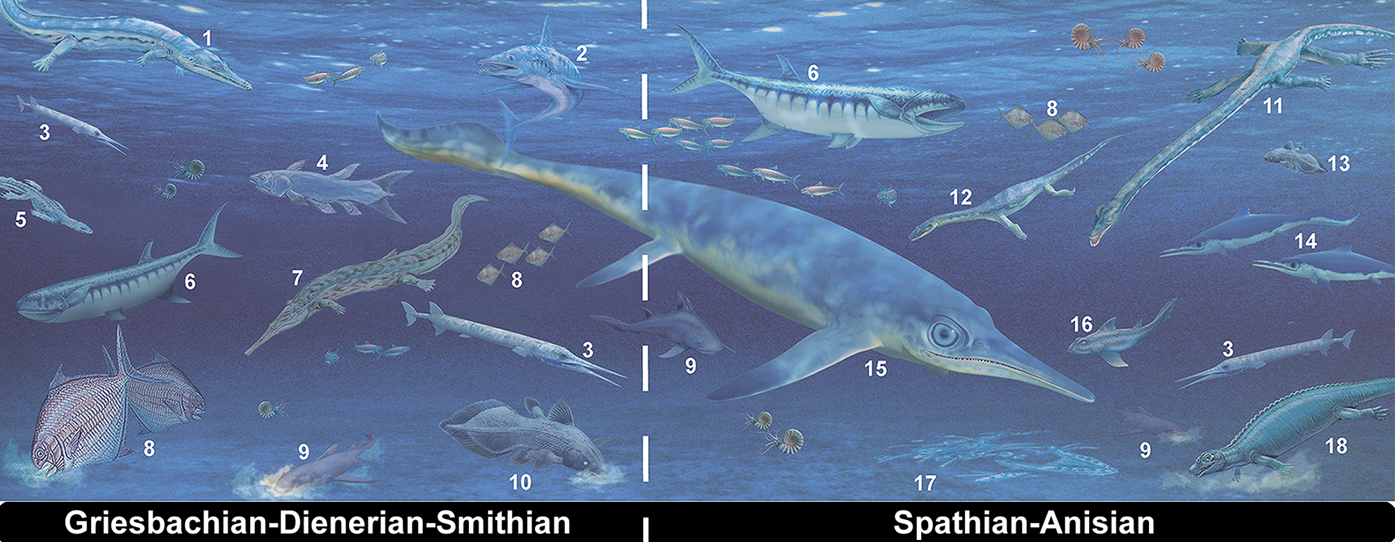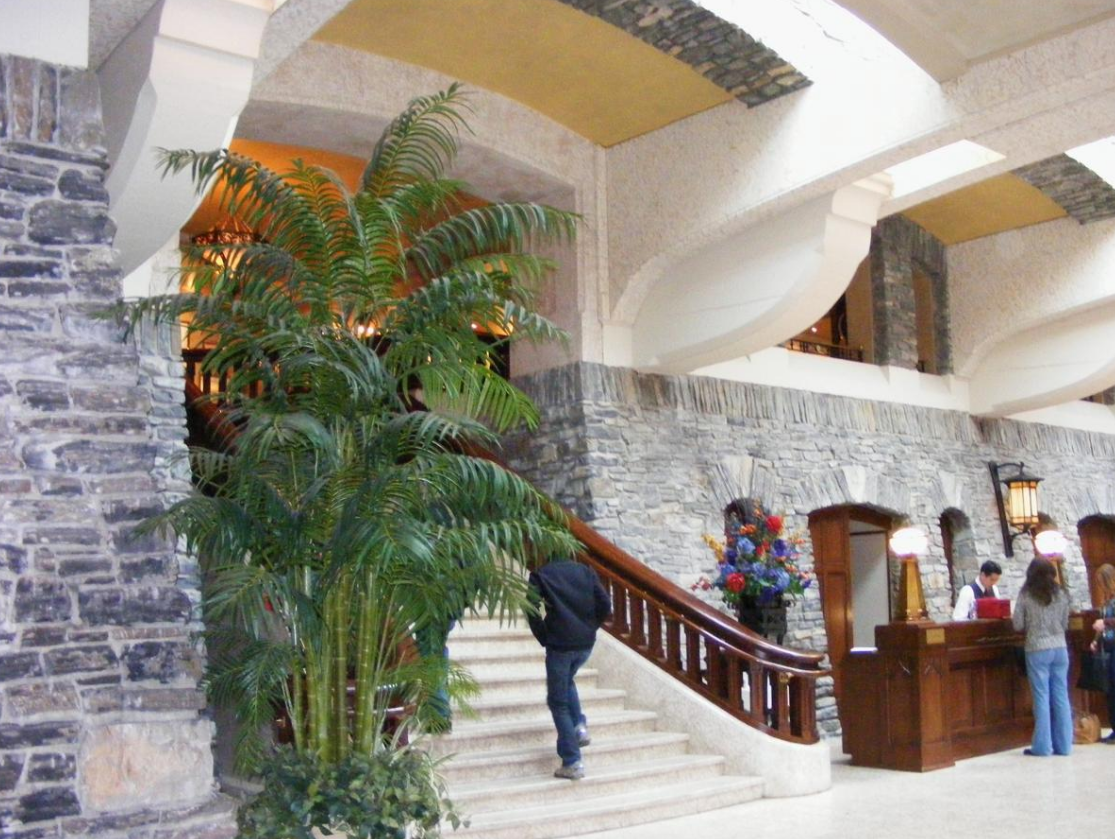
| Version | Summary | Created by | Modification | Content Size | Created at | Operation |
|---|---|---|---|---|---|---|
| 1 | Camila Xu | -- | 729 | 2022-11-30 01:39:22 |
Video Upload Options
The Sulphur Mountain Formation is a geologic formation of Early to Middle Triassic age. It is present on the western edge of the Western Canada Sedimentary Basin in the foothills and Rocky Mountains of western Alberta and northeastern British Columbia. It includes marine fossils from the time shortly after the Permian-Triassic extinction event. The Sulphur Mountain Formation was first described as a member of the Spray River Formation by P.S. Warren in 1945, who named it for Sulphur Mountain in Banff National Park. It was later raised to formation status. Its type section is located in the Spray River gorge at the southern end of Sulphur Mountain.
1. Lithology and Stratigraphy
The Sulphur Mountain Formation was deposited on the continental shelf along the western margin of the North American craton,[1] which at that time was part of the supercontinent of Pangaea.[2] It consists primarily of grey to rusty brown dolomitic and calcareous quartz siltstone, with interbeds of silty sandstone, silty dolostone, mudstone, shale, carbonaceous shale, and minor fine-grained quartz sandstone. Cross-bedding and ripple marks are common in its strata.[2][3][4]
The Sulphur Mountain Formation is subdivided into the following members:
| Geological Unit | Age | Lithology | Thickness | Reference |
|---|---|---|---|---|
| Llama Member | Middle Triassic | Yellowish grey-brown silty dolostone, silty shale, and minor very fine-grained quartz sandstone | 3 – 64 m (9 – 201 ft) |
[5] |
| Whistler Member | Middle Triassic | Dark grey to black silty dolostone and dolomitic quartz siltstone | 13 – 23 m (43 – 75 ft) |
[5] |
| Vega Siltstone Member | Early Triassic | Grey to rusty brown dolomitic and calcareous siltstone, silty limestone, and shale | 52 – 363 m (170 – 1190 ft) |
[5] |
| Mackenzie Dolomite Lentil | Early Triassic | Light grey to yellowish grey, slightly calcareous, silty to sandy dolostone, with minor dolomitic quartz siltstone and sandstone | 0 – 24 m (0 – 80 ft) |
[5] |
| Phroso Siltstone Member | Early Triassic | Grey-brown to dark grey quartz siltstone and silty shale | 30 – 244 m (100 – 800 ft) |
[5] |
2. Paleontology
The Sulphur Mountain Formation has yielded fossils that provide a record of Triassic life shortly after the Permian-Triassic extinction event. Remains of extinct marine reptiles[6][7][8][9] and fish[10] have been found in its strata, as well as conodonts;[1] shells of brachiopods and bivalves;[5] teeth of Hybodus; shells of ammonoids; the ichnofossils Thalassinoides, Planolites, and Zoophycos; and traces of microbial mats.[2][4]

Remains of the following marine reptiles have been found in the Sulphur Mountain Formation:
| Taxon | Material | Notes |
|---|---|---|
|
Agkistrognathus campbelli[6] |
A disarticulated skull |
A thalattosaurian |
|
Grippia longirostris[7] |
Several skulls and forelimbs |
A basal ichthyosaur |
|
Paralonectes merriami[8] |
A thalattosaurian |
|
|
Thalattosaurus borealis[9] |
Anterior skull, partial mandible, vertebral centra, isolated ribs, left pterygoid |
A thalattosaurian |
3. Distribution and Thickness
The Sulphur Mountain Formation is present in the foothills and eastern front ranges of the Canadian Rockies from the Canada–United States border in southwestern Alberta to the Pine River area of northeastern British Columbia. It ranges in thickness from a minimum of 37 metres (120 ft) south of the Bow River in Alberta to a maximum of 557 metres (1,830 ft) in northeastern British Columbia.[3]
4. Relationship to Other Units
The Sulphur Mountain Formation is laterally equivalent to Montney, Doig, and Halfway Formations in the subsurface beneath the plains of Alberta and northeastern British Columbia, and to the Toad, Grayling, and Liard Formations in the foothills of northeastern British Columbia. It unconformably overlies the Permian Ishbel Group or, in some areas, the Mississippian Rundle Group. It is conformably overlain by the Whitehorse Formation in the southern part of its extent and by the laterally equivalent Charlie Lake Formation in the north. In areas where those formations were removed by erosion it is unconformably overlain by the Jurassic Fernie Formation.[3][11]
5. Economic Resources
5.1. Petroleum and Natural Gas

Outcrops of the Sulphur Mountain Formation provide an analog for studying the Montney Formation, a laterally equivalent formation that is a major producer of shale oil and shale gas in the subsurface to the east.[2][4]
5.2. Building Stone
The flaggy siltstones of the Vega Member have been quarried as building stone in the Canmore area. This rock, which is commonly called "Rundle Rock" or "Rundle Stone", has been used extensively to face buildings and construct floors, patios, and fireplaces in the Jasper, Banff, and Calgary areas.[5][12]
5.3. Phosphate
Although localized deposits of granular phosphate are present at the base of the Whistler Member, they lie within Jasper National Park and are protected from development.[5]
References
- Paull, R.K., Paull, R.A. and Laudon, T.S. 1997. Conodont biostratigraphy of the Lower Triassic Mackenzie Dolomite Lentil, Sulphur Mountain Formation in the Cadomin area, Alberta. Bulletin of Canadian Petroleum Geology, vol. 45, no. 4, p. 708-714.
- Noad, Jon, 2017. "A previously unreported bone bed from the Triassic Sulphur Mountain Formation of Kananaskis and its implications for Montney sequence stratigraphy. Abstract, Canadian Society of Petroleum Geologists, GeoConvention 2017, 4 p". https://www.geoconvention.com/archives/2017/334_GC2017_Previously_Unreported_Bone_Bed_from_Triassic_Sulphur_Mountain_Fm.pdf. Retrieved 15 February 2018.
- Glass, D.J. (editor) 1997. Lexicon of Canadian Stratigraphy, vol. 4, Western Canada including eastern British Columbia, Alberta, Saskatchewan and southern Manitoba. Canadian Society of Petroleum Geologists, Calgary, 1423 p. on CD-ROM. ISBN 0-920230-23-7.
- Noad, Jon, 2017. Field trip to examine Montney Formation analogs: Exposures of the Sulphur Mountain Formation around Canmore and Kananaskis, western Alberta, Canada. In: J.C.C. Hseih, ed., Geologic field trips of the Canadian Rockies: 2017 meeting of the GSA Rocky Mountain Section, Geological Society of America, Field Guide 48, p. 137-152; doi: 10.1130/2017.0048(05).
- Gibson, D.W. 1974. Triassic rocks of the southern Canadian Rocky Mountains. Geological Survey of Canada, Bulletin 230, 65 p.
- "New thalattosaurs (Reptilia: Diapsida) from the Triassic Sulphur Mountain Formation of Wapiti Lake, British Columbia (PDF Download Available)". ResearchGate. Retrieved 2017-09-24.
- Cuthbertson, R.S.; Russel, A.P.; Anderson, J.S. (2013). "Cranial morphology and relationships of a new grippidian (Ichtyopterygia) from the Vega-Phroso Siltstone Member (Lower Triassic) of British Columbia, Canada". Journal of Vertebrate Paleontology. 4: 831–847.
- "Fossilworks: Paralonectes". http://fossilworks.org/bridge.pl?a=taxonInfo&taxon_no=282738.
- Nicholls, Elizabeth L. (1999). A reexamination of Thalattosaurus and Nectosaurus and the relationships of the Thalattosauria (reptilia: Diapsida). Berkeley, CA: University of California, Museum of Paleontology.
- Schaeffer, B and Magnus, M. 1976.. "An Early Triassic fish assemblage from British Columbia. Bulletin of the American Museum of Natural History, vol. 156, article 5, p. 516-563". http://digitallibrary.amnh.org/handle/2246/619. Retrieved 18 February 2018.
- Alberta Geological Survey, 2013.. "Alberta Table of Formations; Alberta Energy Regulator". http://www.aer.ca/documents/catalog/TOF.pdf. Retrieved 2016-06-20.
- Hamilton, W.N. and Edwards, W.A.D. 2002 (2002). Industrial minerals in the Western Canada Sedimentary Basin. In: Scott, P.W. and Bristow, C.M. (eds.), Industrial Minerals and Extractive Industry Geology, Based on Papers Presented at the Combined 36th Forum on the Geology of Industrial Minerals and 11th Extractive Industry Geology Conference, Bath, England, 7th-12th May, 2000; Geological Society of London Special Publication, 2002, p. 103-141;. ISBN 978-1-86239-099-7. https://books.google.dk/books?id=31UpYIGp3ScC&pg=PA109. Retrieved 19 February 2018.




